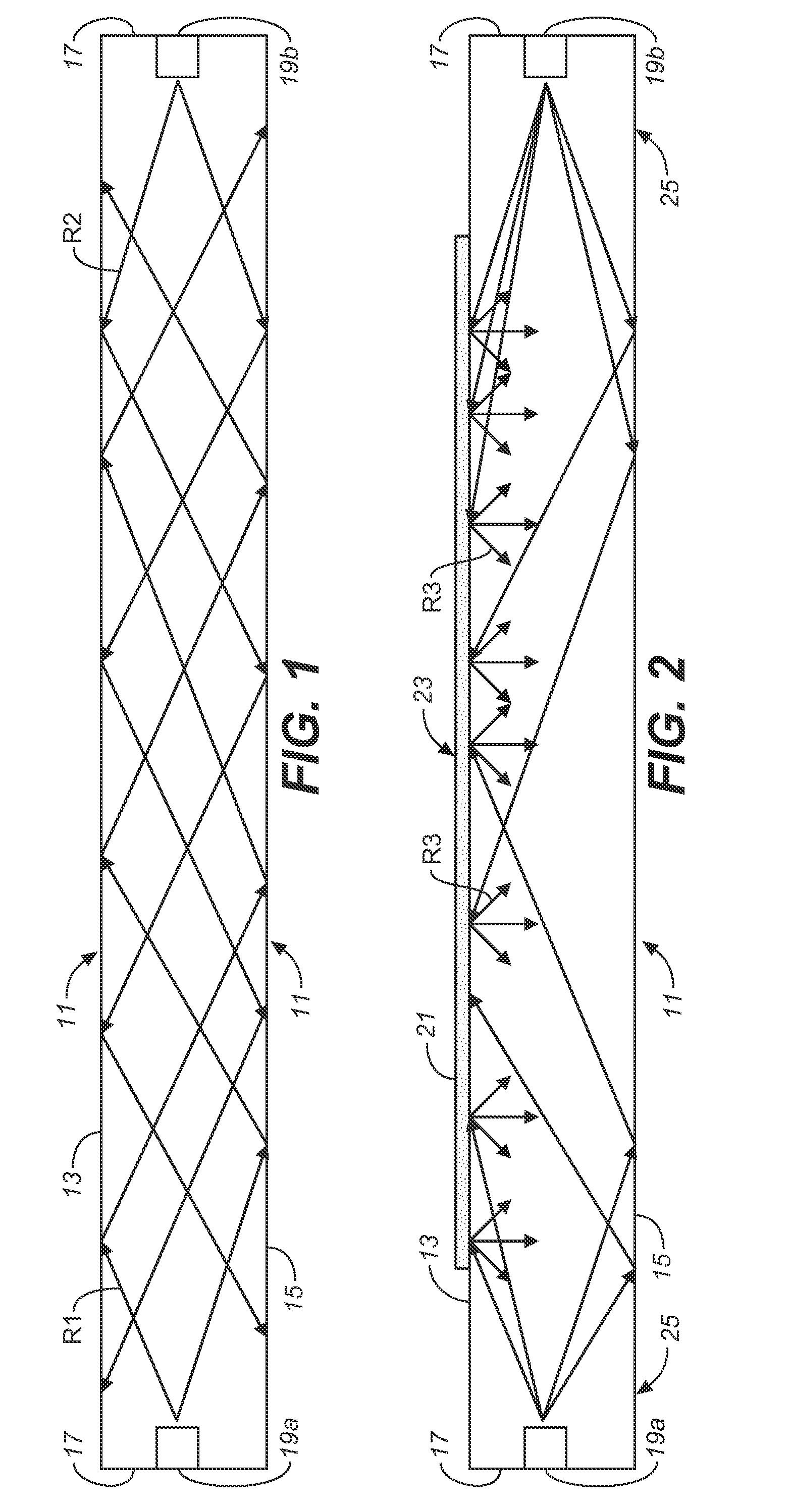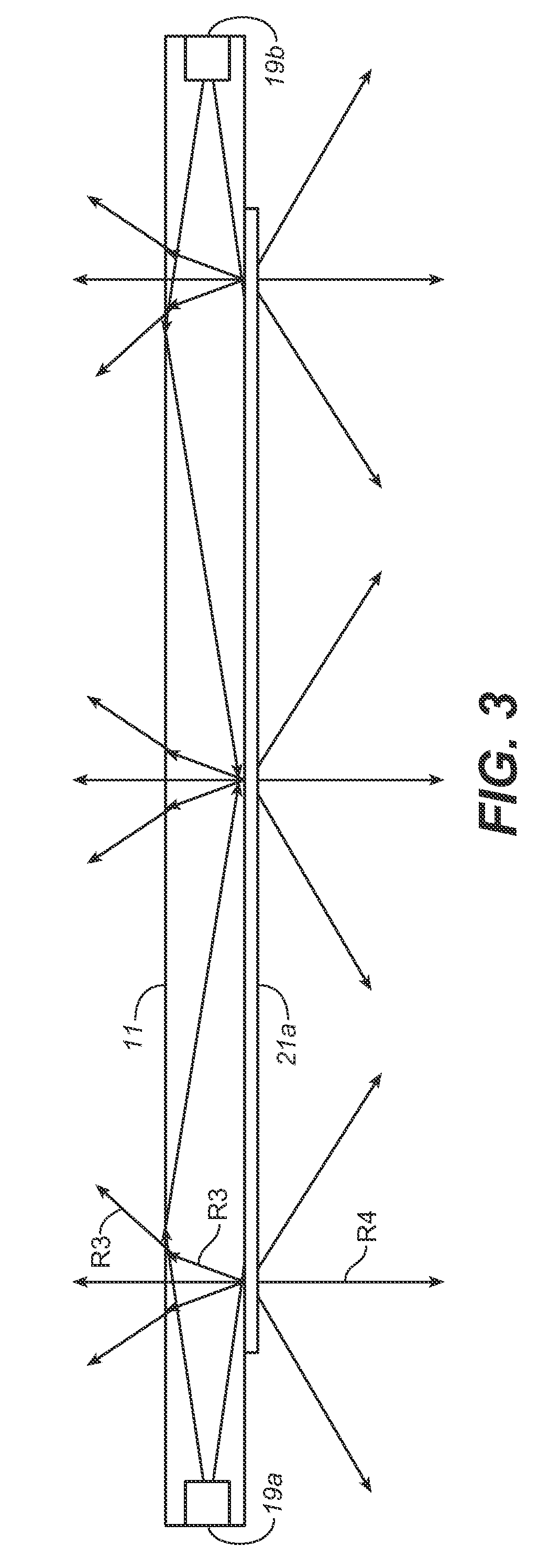Luminaire having floating luminous light source
a technology of floating light source and luminaire, which is applied in the field of luminaires, can solve the problems that the lighting designer is limited in his or her ability to readily control the location of the luminous surfa
- Summary
- Abstract
- Description
- Claims
- Application Information
AI Technical Summary
Benefits of technology
Problems solved by technology
Method used
Image
Examples
Embodiment Construction
[0021]Light waveguides, also sometimes referred to as “light guides” or “light pipes,” work on the principle of internal reflections governed by Snell's Law. Light introduced at the edges of the guide is internally reflected or “piped” down the guide without emerging from the guide's surfaces, unless and until it is somehow extracted from the guide. This principle is illustrated in FIG. 1, wherein a light waveguide 11, fabricated of a clear, light-transmitting material, has parallel top and bottom surfaces 13, 15 and edges 17 through which light can be introduced into the guide. In the illustrated waveguide, light is introduced into each of the guide's edges 17 by means of light sources 19a, 19b, suitably LEDs, that are shown as being inset into the guide. The light produced by these sources is piped down the guide, as represented by light rays R1 with respect to source 19a, and light rays R2 with respect to source 19b. Because of the low angle of incidence of light rays R1 and R2 o...
PUM
 Login to View More
Login to View More Abstract
Description
Claims
Application Information
 Login to View More
Login to View More - R&D
- Intellectual Property
- Life Sciences
- Materials
- Tech Scout
- Unparalleled Data Quality
- Higher Quality Content
- 60% Fewer Hallucinations
Browse by: Latest US Patents, China's latest patents, Technical Efficacy Thesaurus, Application Domain, Technology Topic, Popular Technical Reports.
© 2025 PatSnap. All rights reserved.Legal|Privacy policy|Modern Slavery Act Transparency Statement|Sitemap|About US| Contact US: help@patsnap.com



